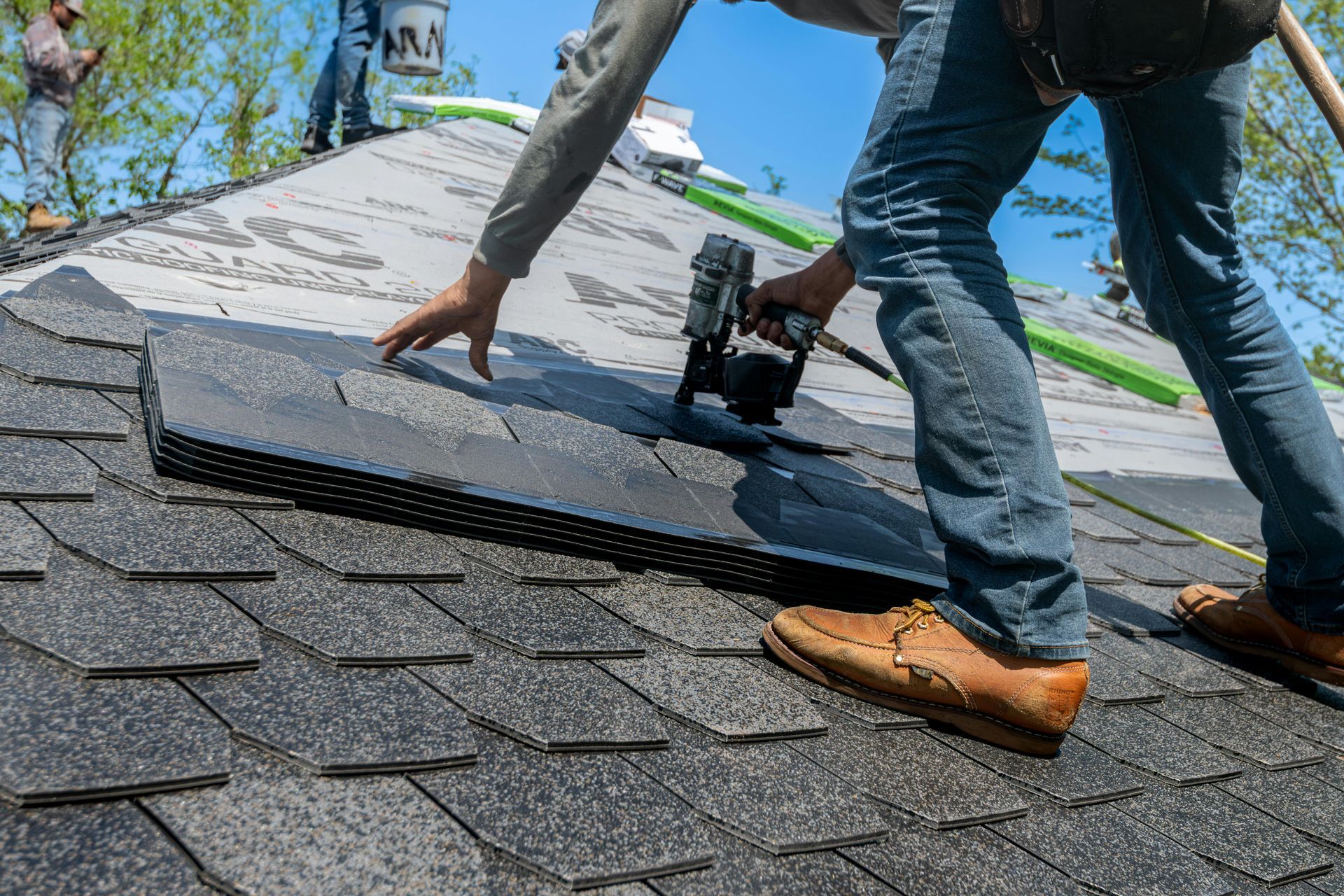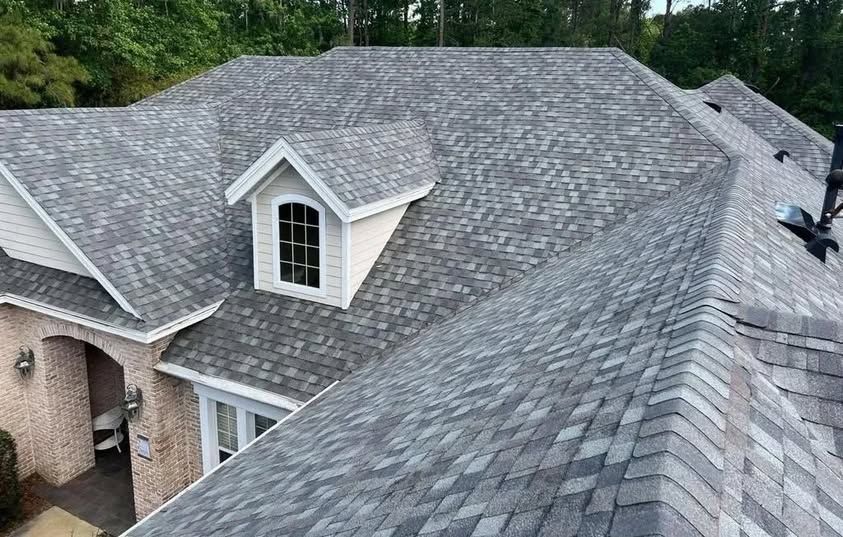Flat Roof vs. Sloped Roof: Pros, Cons, and Maintenance Differences
Choosing the right roof style is about more than appearance - it affects your home’s energy efficiency, drainage, and long-term maintenance. For homeowners in Fredericton and surrounding areas like New Maryland, Lincoln, and Oromocto, the decision between a flat roof and a sloped roof depends heavily on how each performs in New Brunswick’s demanding climate.
Both roof types can be effective if designed and maintained properly. Understanding their strengths, weaknesses, and maintenance requirements will help you make an informed choice that fits your property, lifestyle, and budget.
1. Understanding the Basics: Flat vs. Sloped Roofs
Before diving into performance, it helps to clarify what distinguishes these two roof styles.
- Flat Roofs: Despite the name, flat roofs have a slight pitch (usually 1–10 degrees) to allow water to drain. They’re common in commercial buildings and modern residential designs.
- Sloped Roofs: These are the traditional pitched roofs found on most Fredericton homes. They come in various angles and shapes, such as gable, hip, or gambrel designs, all intended to shed water and snow efficiently.
Both types can handle New Brunswick’s weather, but they do so in very different ways.
2. Flat Roofs in Fredericton: Advantages and Challenges
Flat roofs are becoming more popular in contemporary home builds and additions across Fredericton and Oromocto. Their minimalist appearance and functional design offer several benefits - but they also come with unique maintenance needs.
Advantages of Flat Roofs
- Modern Aesthetic: Flat roofs complement sleek, modern architecture and can make homes look larger and more cohesive.
- Usable Space: Many homeowners use their flat roofs as patios, green spaces, or solar panel platforms, especially in urban Fredericton neighbourhoods.
- Easier Access: Inspections and repairs are simpler and safer because the surface is walkable.
- Lower Construction Costs: Flat roofs typically require fewer materials and take less time to install, reducing initial costs.
Challenges of Flat Roofs
- Drainage Issues: Because of their minimal slope, flat roofs are prone to pooling water, especially after New Brunswick’s heavy spring rains. Standing water can lead to leaks and membrane damage.
- Snow and Ice Build-Up: Fredericton winters bring substantial snow loads. Without proper snow removal, the weight can stress the roof structure.
- Shorter Lifespan: Most flat roof materials, such as rubber (EPDM) or modified bitumen, last 20–30 years - shorter than high-quality sloped options.
- Frequent Maintenance: Regular inspections are essential to prevent small leaks from becoming major problems.
Ideal For: Commercial buildings, home additions, or modern-style homes in Fredericton with efficient drainage systems and proper insulation.
3. Sloped Roofs: Traditional Strength for New Brunswick Weather
Sloped roofs remain the standard for residential properties throughout New Brunswick, and for good reason. Their angled design helps manage the region’s variable climate - from freezing rain to heavy snow.
Advantages of Sloped Roofs
- Superior Drainage: Water and snow naturally slide off, reducing the risk of leaks or pooling.
- Longer Lifespan: Asphalt shingles, metal panels, or cedar shakes on a sloped roof typically last 25–50 years, depending on materials and maintenance.
- Energy Efficiency: The attic space beneath a sloped roof improves ventilation and insulation, helping regulate indoor temperatures year-round.
- Lower Long-Term Maintenance: While initial installation costs are higher, sloped roofs require less frequent upkeep compared to flat systems.
- Variety of Styles: Homeowners can choose from numerous designs to match architectural preferences, whether it’s a classic pitched roof or a modern asymmetric shape.
Challenges of Sloped Roofs
- Higher Upfront Cost: Materials and installation for sloped roofs generally cost more than flat alternatives.
- More Complex Repairs: Because of their angle, inspections and repairs are more labor-intensive and require professional safety measures.
- Limited Usable Space: Unlike flat roofs, they don’t provide accessible outdoor space or easy installation for solar systems.
Ideal For: Traditional homes in Fredericton, Lincoln, or New Maryland, where reliable drainage and year-round durability are top priorities.
4. How New Brunswick’s Climate Impacts Each Roof Type
New Brunswick’s weather plays a major role in how each roof type performs. With cold winters, high humidity, and frequent freeze-thaw cycles, your roof must be able to handle dramatic temperature swings.
Flat Roofs in NB:
- Need superior waterproof membranes to resist standing water and ice.
- Require regular snow removal to prevent overloading.
- Must include proper insulation and vapor barriers to reduce condensation buildup.
Sloped Roofs in NB:
- Perform better in snow-heavy regions like Fredericton and Oromocto, where natural runoff reduces buildup.
- Are less likely to experience water pooling but need secure flashing and venting to handle ice dam risks.
- Maintain better airflow, reducing humidity-related issues common in homes near the Saint John River.
In short, sloped roofs tend to be more forgiving in New Brunswick’s challenging conditions, while flat roofs require consistent attention to stay in top shape.
5. Maintenance Differences Between Flat and Sloped Roofs
Maintenance is where the two roof styles diverge the most.
Flat Roof Maintenance
- Inspect at least twice a year (spring and fall) and after major storms.
- Remove standing water within 24–48 hours.
- Clear debris from drains and scuppers regularly.
- Check seams, flashing, and membranes for signs of wear or cracking.
- Reapply protective coatings every 5–10 years to extend lifespan.
Because flat roofs are easier to access, many homeowners handle basic upkeep themselves. However, professional inspections are still crucial to prevent hidden leaks that can lead to costly interior repairs.
Sloped Roof Maintenance
- Inspect shingles annually for curling, cracking, or missing sections.
- Keep gutters and downspouts clear to prevent ice dams.
- Trim overhanging branches to avoid debris buildup.
- Have flashing and vents checked for proper sealing before winter.
Although sloped roofs require less maintenance overall, safety is a major concern when inspecting or cleaning them. Hiring experienced roofers in Fredericton is the safest and most effective way to ensure proper care.
6. Cost Comparison: Flat vs. Sloped Roofs
Cost varies based on materials, size, and design, but here’s a general overview for Fredericton homeowners in 2025:
| Roof Type | Average Cost (per sq. ft.) | Estimated Total (2,000 sq. ft.) | Typical Lifespan |
|---|---|---|---|
| Flat Roof | $6 – $10 | $12,000 – $20,000 | 20–30 years |
| Sloped Roof (Asphalt Shingles) | $4 – $6.50 | $8,000 – $13,000 | 20–25 years |
| Sloped Roof (Metal) | $8 – $14 | $16,000 – $28,000 | 40–70 years |
While flat roofs can cost more per square foot due to specialized materials and waterproofing, sloped roofs often deliver better long-term value in New Brunswick’s climate.
7. Choosing the Right Roof for Your Property Type
The best roof depends on how you use your property and your long-term goals:
- Residential Homes: Sloped roofs remain the preferred option in Fredericton and nearby areas due to superior drainage and energy efficiency.
- Commercial Buildings: Flat roofs are ideal for large, single-story structures where aesthetics and functionality (like HVAC or solar installations) matter more than snow runoff.
- Modern Homes or Additions: Flat or low-slope roofs work well when designed with proper waterproofing and drainage systems.
- Cottages or Rural Properties: Sloped roofs are more practical for heavy snowfall areas like Lincoln and Oromocto, minimizing maintenance demands.
When in doubt, consult with a local roofing specialist who understands both climate and architectural design.
8. Flat vs. Sloped Roof Longevity in Fredericton
Longevity is tied to both design and upkeep. In Fredericton’s climate, sloped roofs generally outlast flat roofs by 10–20 years when properly maintained. A flat roof’s lifespan can be extended with regular inspections and membrane recoating, while a sloped roof benefits from proper attic ventilation and seasonal inspections.
Local contractors such as Altitude Roofing can assess your roof’s condition and recommend the most durable materials for your specific property and exposure to the elements.
9. Making the Right Decision: What to Consider
Before choosing between a flat or sloped roof, evaluate:
- Your home’s architectural style and drainage design.
- Long-term maintenance commitment.
- Local climate conditions and snow load risks.
- Budget for installation and upkeep.
- Energy efficiency and ventilation goals.
If you value low-maintenance reliability and classic style, a sloped roof is likely your best bet. If you’re drawn to a modern aesthetic and want extra usable space, a flat roof can work beautifully with the right waterproofing and regular care.
Which Roof Wins for New Brunswick?
In Fredericton and across New Brunswick, both flat and sloped roofs can perform well if built and maintained correctly. However, for most homeowners, sloped roofs offer the best balance of cost, durability, and weather resistance. Flat roofs shine in modern designs and commercial applications but demand ongoing attention to stay leak-free.
Whether you’re planning a new build, addition, or roof replacement, working with a trusted local team like Altitude Roofing ensures your project is tailored to the province’s climate and your home’s unique needs.
📞
Call Altitude Roofing today or
book your free roof consultation.


